Symbol placement guidelines
Basic guidelines for barcode placement depending on the symbol, product, size and surface.
Choosing where to place the barcode on the packaging is determined by various factors such as the type of symbol, the size of the package, the scanning environment, the printing process, the available surface on the package.
In any case, when the barcode is placed correctly and therefore easily scanned, it achieves maximum productivity in any scanning environment.
Retail items
- The barcode, including the human readable digits underneath (identification number) must be visible and free of any obstacles preventing it from scanning.
- Never allow two barcodes encoding different GTINs to be visible on a package. This is particularly relevant to multi-packs, especially those with clear wrapping. Therefore, multi-packs must carry a separate GTIN, with all internal barcodes obscured.
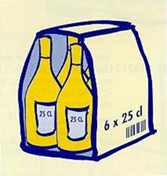
- If the item is random wrapped, the same barcode can be printed more than once on the wrapping. This ensures that one complete barcode is always visible.
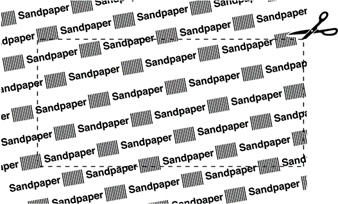
- Scanning is most successful when the barcode is printed on a reasonably smooth surface. Avoid printing around the corners or on folds, creases, seams, and any other uneven packaging area.
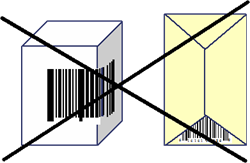
- Sometimes the irregular shape of packaging prevents the barcode from flat (parallel) contact with the scanning surface of slot scanners. This applies in particular to carded, blister-packed, or concave items.
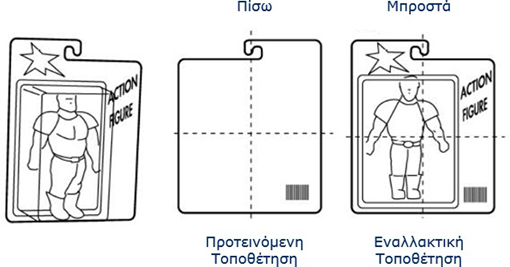
- On cylindrical products, where the printing direction allows, it is generally desirable that the bars are perpendicular to the axis of the cylinder (ladder style), so that a scan line can pass through the symbol on as near a flat plane as possible. This caters for the problems associated with curves on items such as cans and bottles. The ladder orientation is imperative for curved surfaces with a small radius.
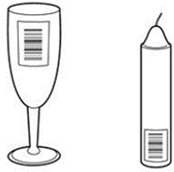
- The preferred placement for a barcode is on the lower right quadrant of the back, respecting the proper Quiet Zone areas around the barcode symbol and the edge rule, which dictates that the barcode symbol must not be closer than 8 mm or farther than 100 mm from any edge of the package/container. The alternative is on the lower quadrant of another side of the container.
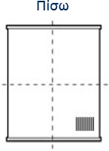
On cartons and outer cases
The lower edge of the barcode should be located 32 mm from the natural base of the item. The symbol (including Quiet Zones) should be at least 19 mm from the vertical edges. When using an ITF-14 barcode, the outer edges of the barcode's left or right bearer bar should be a minimum of 19 mm (0.75 inch) from the vertical edges of the side of the item.
Symbol placement guidelines on outer cases
Το κάτω άκρο των γραμμών του barcode θα πρέπει να απέχει 32mm από τη βάση της συσκευασίας. Συμπεριλαμβανομένων των ελεύθερων ζωνών, το barcode θα πρέπει να απέχει τουλάχιστον 19mm από τις κατακόρυφες ακμές. Όταν χρησιμοποιείται barcode ITF-14, τα εξωτερικά άκρα της αριστερής και δεξιάς περιβάλλουσας γραμμής (φέροντος πλαισίου) του barcode θα πρέπει να απέχουν τουλάχιστον 19mm από τις κατακόρυφες ακμές των πλευρών του κιβωτίου.
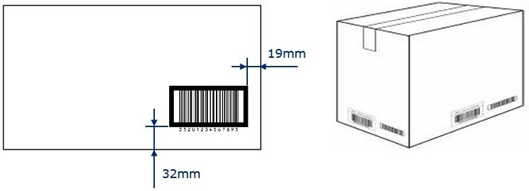
On shallow trays and cases
If the height of a case or tray is less than 50 mm (2 inch) and printing a full height barcode with the human readable interpretation below the bars is impossible, or if the construction of the unit prevents accommodation of the full symbol height, the following options should be considered in this order of preference:
- Place the Human Readable Interpretation adjacent to (obviously associated with) the symbol, outside the compulsory Quiet Zones.
- When the height of the unit is less than 32 mm (1.26 inch), the symbol may be placed on the top of the package. The symbol should be placed with the bars perpendicular to the shortest side, and the symbol (including Quiet Zones) should be no closer than 19 mm (0.75 inch) from
any edge.

Label placement guidelines on pallets
For pallets labels should be placed so that all the barcode symbols are at a height of between 400 mm and 800 mm from the base of the unit, and no closer than 50 mm from the vertical edge.
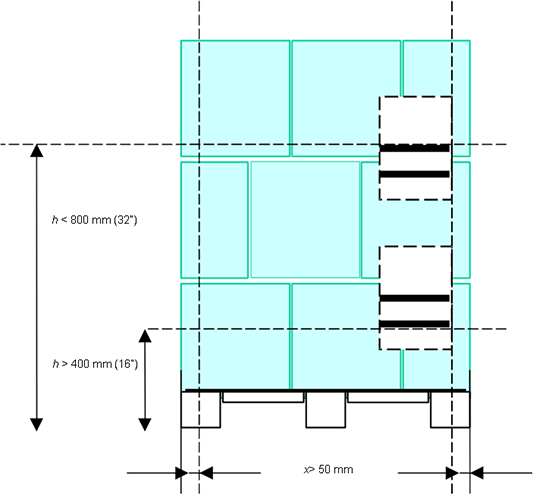
More information…
We always recommend that you refer to GS1 specifications so to have a clear understanding of the parameters to consider when placing barcodes:







